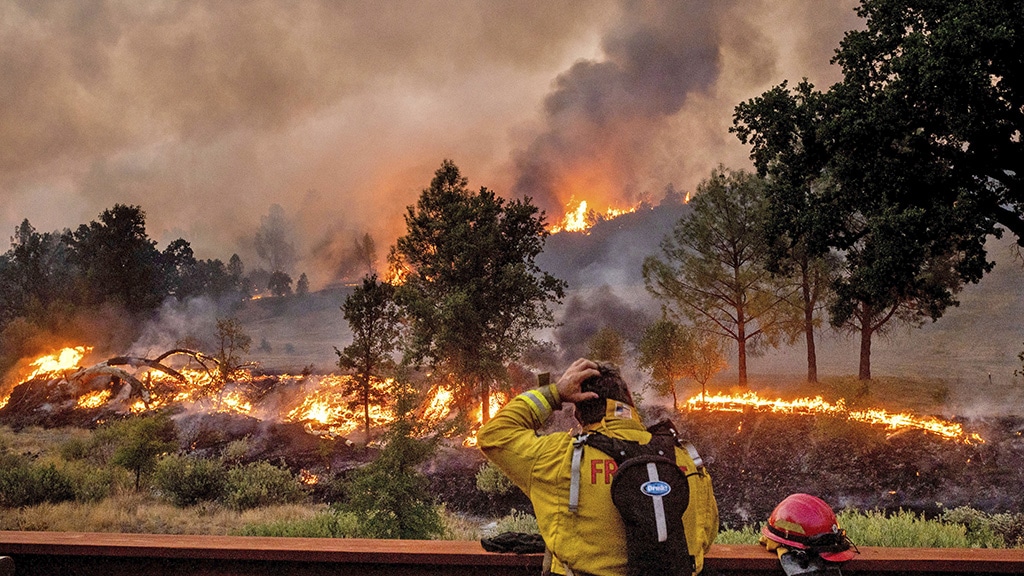How to Prepare for a Wildfire
A must as dry climates have caused an increase of wildfires.
Over the last several years, there has been a rise in the number of wildfires. These raging fires have caused millions of dollars of damage and have sadly resulted in the untimely deaths of some in its path. Additionally, these fires has caused many to flee their homes. Taking time to prepare for a wildfire can be the difference of peace of mind and increased anxiety.
While we can never be fully prepared for a wildfire, we can take steps to be even more ready to evacuate. In this article, we explore what wildfires are, what we can do to prepare ahead of time, and what to do if we are told to evacuate.
Please note that this article contain affiliate links.
What is a Wildfire?
The World Health Organization provides the following definition of a wildfire:
“A wildfire is an unplanned fire that burns in a natural area such as a forest, grassland, or prairie. Wildfires are often caused by human activity or a natural phenomenon such as lightning, and they can happen at any time or anywhere. In 50% of wildfires recorded, it is not known how they started.
The risk of wildfires increases in extremely dry conditions, such as drought, and during high winds. Wildfires can disrupt transportation, communications, power and gas services, and water supply. They also lead to a deterioration of the air quality, and loss of property, crops, resources, animals and people.
Wildfires and volcanic activities affected 6.2 million people between 1998-2017 with 2400 attributable deaths worldwide from suffocation, injuries, and burns, but the size and frequency of wildfires are growing due to climate change. Hotter and drier conditions are drying out ecosystems and increasing the risk of wildfires. Wildfires also simultaneously impact weather and the climate by releasing large quantities of carbon dioxide, carbon monoxide and fine particulate matter into the atmosphere. Resulting air pollution can cause a range of health issues, including respiratory and cardiovascular problems. Another significant health effect of wildfires is on mental health and psychosocial well-being.”
Understanding the Warnings
Like tornados and hurricanes, wildfires have warnings that we should be familiar with if we live in a location where wildfires are more common. According to the National Oceanic and Atmospheric Administration (NOAA), here are the warnings:
- Red Flag Warning: Take Action. Be extremely careful with open flames. NWS issues a Red Flag Warning, in conjunction with land management agencies, to alert land managers to an ongoing or imminent critical fire weather pattern. NWS issues a Red Flag Warning when fire conditions are ongoing or expected to occur shortly.
- Fire Weather Watch: Be Prepared. A Watch alerts land managers and the public that upcoming weather conditions could result in extensive wildland fire occurrence or extreme fire behavior. A watch means critical fire weather conditions are possible but not imminent or occurring.
- Extreme Fire Behavior: This alert implies a wildfire likely to rage of out of control. If is often hard to predict these fires because such they behave erratically, sometimes dangerously.
Make an Emergency Plan
Like other natural disaster, having an emergency plan is very important. It is often overlooked, but with the right plan in place, will bring peace of mind and increased readiness if the family has to take decisive action.
Here are some things that should be included in your emergency plan:
- Emergency phone numbers.
- Emergency supply list. If you don’t want to spend the time creating your own go bag, buy one instead.
- Place to go in the event of an emergency. This can include a shelter or the home of relative or friend. Make sure others know of your intentions just in case they can’t call you, they can know where you might be.
Go over this emergency plan as a family. It might be helpful to review this emergency plan yearly.
Gather Supplies
On this website, we speak about the importance of having a go bag and help prepare you to do so. Here are a list of items you should have on hand.
- Food
- Water
- First Aid
- Power Supplies
- Lighting
- Shelter
- Fire extinguisher
- Important documents
- Activities for kids
For a more detailed list of items to have, please visit the checklist or buy a emergency go bag.
Prepare Your Car
Since wildfires are unpredictable and authorities might order an evacuation, having our cars ready is important. There are two main things we can do to prepare our car:
- Make sure our gas tank is full. A good practice is to never let our gauge go below the halfway mark. Even more important is that when confronted with warnings of a wildfire, make sure we are fueled up.
- Have an emergency kit in the car. In anticipation of evacuation, have our go bags loaded in our car and ready.
Prepare Your Home
Preparing your home for a wildfire requires that steps be done even before warnings of a wildfire are given. If you live in an area where wildfires are more likely to happen, there are steps that could be taken.
Weather Underground provides a great list of what to do to prepare your home:
- Rake leaves, dead limbs and twigs, and clear out all flammable vegetation
- Remove leaves and rubbish from under structures
- Thin a 15-foot space between tree crowns, and remove limbs within 15 feet of the ground
- Remove dead branches that extend over the roof
- Prune tree branches and shrubs within 15 feet of a stovepipe or chimney outlet
- Ask the power company to clear branches from power lines
- Remove vines from the walls of the home
- Mow grass regularly
- Clear a 10-foot area around propane tanks and the barbecue
- Place a screen over the barbecue grill—use nonflammable material with mesh no coarser than one quarter inch
- Regularly dispose of newspapers and rubbish at an approved site and follow local burning regulations
- Place stove, fireplace and grill ashes in a metal bucket, soak in water for 2 days; then bury the cold ashes in mineral soil
- Store gasoline, oily rags and other flammable materials in approved safety cans, and place the cans in a safe location away from the base of buildings
- Stack firewood at least 100 feet away and uphill from your home, and clear combustible material within 20 feet
- Use only wood-burning devices evaluated by a nationally recognized laboratory, such as Underwriters Laboratories (UL)
- Review your homeowner’s insurance policy and also prepare/update a list of your home’s contents
Be Prepared for a Wildfire
News reports of wildfires are very frightening. The experiences of those who have faced them prove that what we see and hear about is true. One thing they would agree with is that by being prepared and by listening to authorities, they were able to navigate safely.
This does not mean that we won’t suffer lose or property. Like any storm or disaster, that is a possibility. However, our safety is of utmost importance.
With that in mind, let’s prepare our go bags and follow the steps outlined in this article. It is with preparedness and safety in might that this article was written and we hope that this proves helpful to you.
Ready to make your emergency go bag?
Stay one step ahead of a disaster later by taking steps to prepare now.

